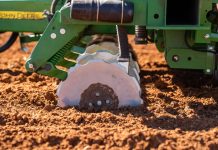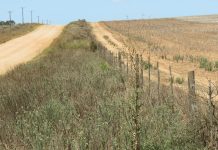
and Management,
North-West University

Prof Hannalene du Plessis, IPM programme, Unit for Environmental Sciences
and Management,
North-West University
Cutworm has become one of the most important pests of maize in South Africa over the past four years. During the previous maize planting season, cutworm larvae destroyed thousands of hectares of maize seedlings, necessitating repeated applications of insecticides, followed by replanting of seed in many cases.
Since cutworm is a sporadic pest, it is difficult to predict if it will be economically important in a specific region or field. It is therefore imperative to understand cutworm biology and to scout fields for its presence and damage to seedlings.
Cutworm biology
Cutworm larvae have a very wide host plant range and the presence of weeds on crop fields ensures their survival during the off-season. Moths lay eggs on the bare soil and leaves of weeds and volunteer maize plants that may occur within fields. Small larvae emerge from the eggs after about a week. They hide under and feed on leaves of weeds or crops, on and near the soil surface. Large larvae burrow into the soil and emerge only at night.
This pest’s development and ecology are strongly influenced by temperature. Under optimal conditions, the duration of the larval stage from egg hatch to the sixth instar development stage is approximately 42 days. During winter months larval development may take as long as 120 days to the sixth instar.
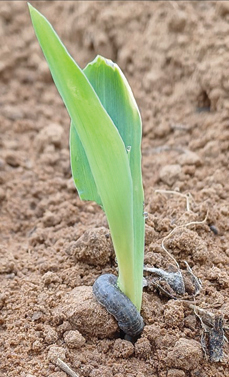
Pest generations and infestation scenarios
Because of the cold winter temperatures in the maize production region of South Africa, this pest goes through only two or three generations per year. In warmer regions such as Zimbabwe, four generations per year have been recorded.
Since cutworm moths and larvae can tolerate very low temperatures, overlapping generations occur and larvae in different stages are present in fields throughout the year. Moths that are active in autumn lay their eggs on weeds, which provide food for slow-developing larvae during winter months. Depending on the time when the eggs are laid during the autumn months, larvae of all sizes are present in fields during the following winter months. During spring and in summer months, when temperatures increase, the larval development rate increases, pupae develop, and moths emerge to continue the pest cycle.
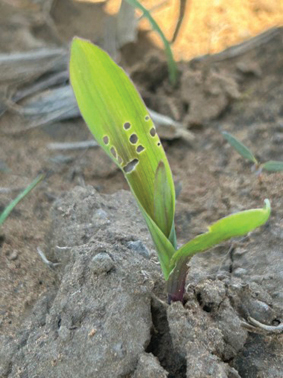
There is a strong interaction between environmental conditions, weeds, and cutworms. Depending on environmental conditions and planting time, two different scenarios regarding cutworm infestations may occur. In cases where planting is done during early spring and summer, seedlings can be damaged by larvae that overwintered on these fields. Maize that is planted later (December onwards), may be attacked by larvae of the second-generation moths that emerged from fallow and other fields, and laid their eggs on weedy plants and volunteer maize plants during the preceding two-month period.
Link between weeds and cutworm presence
Since moths lay their eggs on weeds and are active throughout the winter, it is generally accepted that an abundance of winter weeds may enhance cutworm infestations. Abundant autumn rains may also lead to increased cutworm populations during the following spring because of increased winter weed populations. Studies have shown that the growth form of weedy plants plays an important role in cutworm survival. Cutworm larvae are much more likely to occur and survive under weedy plants that grow in a rosette form which covers the soil surface, than upright plants which do not provide protection for larvae on the soil surface. The protection provided by these rosette forms is especially important for small larvae that do not tunnel into the soil but remain on the soil surface.
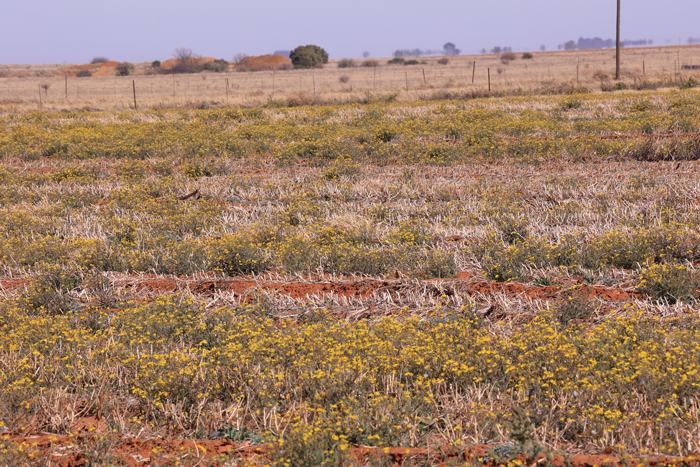
Control
There are two different approaches to cutworm management. One strategy is to apply insecticides prior to and after planting when damage is observed. The other is to kill cutworm larvae by removing their weedy host plants long before planting.
Preventing cutworms from damaging crops
Because the presence of weeds increases the risk of cutworm infestation, pre-planting weed management is key to cutworm control. Pre-plant weed control is the most effective strategy to control cutworms. Where practically possible, fields must be cultivated at least 35 days before planting and kept free of weeds and volunteer plants until planting. This will deprive the small cutworms present in the fields from food, causing them to die of starvation. If no volunteer plants or weeds are present in fields at the beginning of spring, no food plants are available for moths to lay their eggs, eliminating the risk of damage to small seedlings by cutworms.
Scouting
Scouting for cutworm larvae under weeds during late winter is difficult and labour intensive. However, if needed, a spade can be used to dig up the soil below bushy weeds with aerial parts covering the soil surface. The collected soil can then be sieved to determine if, and how many, cutworms are present. If many cutworms are found, weed control should be implemented and planting should be postponed for a period long enough for cutworms to starve. Seedlings are damaged if crops are planted in a field heavily infested with cutworm, which often necessitates replanting.
The scouting for cutworm damage to seedlings should commence immediately when the seedlings emerge. The first indication of cutworm damage is usually the wilting of seedlings or stand loss. During scouting, it is also important to inspect newly emerged seedlings for the presence of small holes in leaves. If such symptoms are observed, it could indicate that small cutworm larvae or other soil pests are present.
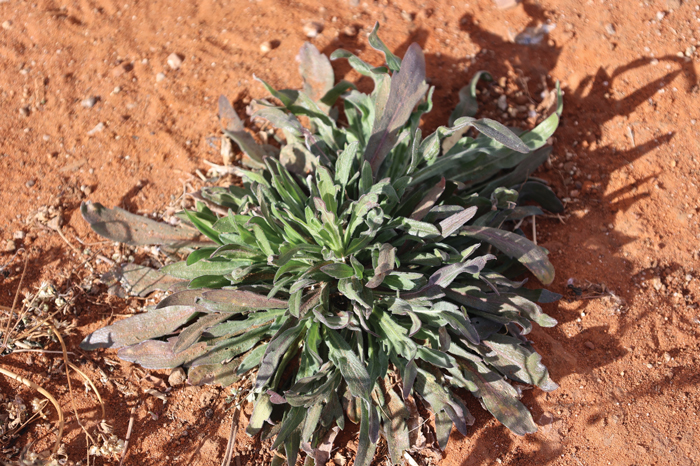
Chemical control of cutworm
The efficacy of insecticides for control of cutworm larvae is affected by many factors. Amongst these are the number and size of the cutworms present in the field, the moisture levels of the soil, as well as the ecology and biology of the pest. Small cutworms are more susceptible to insecticides compared to fully grown larvae. Large cutworms surface at night to feed above ground. It is therefore important to apply pesticides during late afternoon if possible. It is preferable that the soil surface be moist during insecticide application, since larvae tend to remain below the soil surface when it is very dry. Since not all cutworms will surface on a single night, it may take several days before the full effect of the insecticide is achieved.
Cutworms do not feed during the moulting process. Since moulting from one larval stage to the next may take up to two days, some of the larvae that are present in a field will not be active above ground in the evening after the application was done. Under very warm and dry conditions, the larvae will also remain subterranean and may not come into contact with the insecticide for a few days after application. In addition, breakdown of the insecticide in these conditions over days, may also result in the expected control levels not being achieved. Some live larvae may therefore be expected in the field after applications. It emphasises the importance of scouting for the presence of dead larvae after applications were done. Registered insecticides generally have long enough residual periods to be active when moulting cutworms start feeding again.
Conclusion
The interaction between environmental factors such as rainfall and temperature, weeds, and cutworms determine the occurrence and prevalence of cutworms in fields. Seedlings are damaged by cutworm larvae that overwintered in fields. The most important control measure for effective cutworm control is therefore to ensure that fields are free of weeds for a period of at least 35 days prior to planting. It will cause overwintering larvae in these fields to starve. Good, timely weed control is therefore the answer to effective early season cutworm control.






